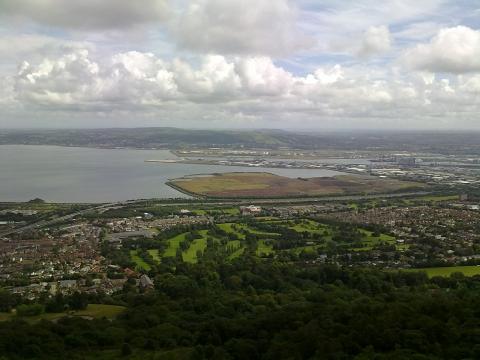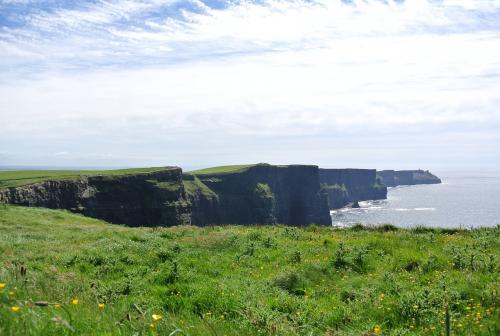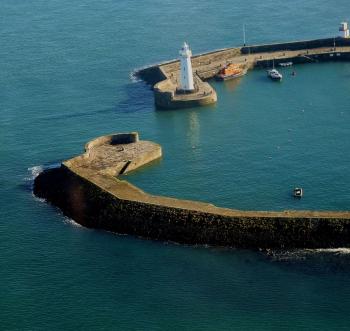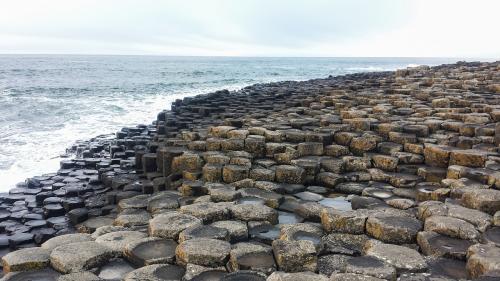Seasons in Northern Ireland

Territory of Northern Ireland lies in the zone of moderate climate adjusted to features of the island. Precipitation levels are almost even at all seasons yet territorial distribution isn’t so even. There are more showers in western regions than on the east of the country.
Warm waters of Gulf Stream smooth weather a bit. However weather in Northern Ireland is duller than in rest of Great Britain. “Eternal’ dampness, lack of daylight hours and almost daily clouds those are three main features of weather in the country. In general summer is warm and winter is mildly cold with rare snow.
Seasons
Contents:
Spring in Northern Ireland
Begging of spring in Northern Ireland is definitely cold. Western and eastern regions are still blown by raging winds but precipitation slightly decreases. Central regions are even colder for they located mostly on plains where cold air falls.
At April and May there is gradual warming. By the end of the season temperature reaches 14 °C (57 °F). In coastal areas amount of sunny days grows. Blossoming starts in parks and on flowerbeds there are blooming daffodils. So Northern Ireland is quite popular at the season even despite frequent showers.
Climate of the Spring Months
| March Max average t°: +9 °C (49 °F) Min average t°: +2 °C (36 °F) Sundial in the day: 3 hours Rainy days: 13 days Precipitation: 52 mm (2,0") |
| April Max average t°: +11 °C (52 °F) Min average t°: +3.5 °C (38 °F) Sundial in the day: 5 hours Rainy days: 13 days Precipitation: 52 mm (2,0") |
| May Max average t°: +14 °C (58 °F) Min average t°: +6 °C (43 °F) Sundial in the day: 10 hours Rainy days: 12 days Precipitation: 77 mm (3,0") |
(Belfast)
Spring Holidays
March 11 – Mothering Sunday.
March 19 – St. Patrick’s Day.
May 7 – Early May Bank Holiday.
May 28 – Spring Bank Holiday.
Plus Easter celebrations at March-April.
Summer in Northern Ireland
Bright sun, clear sky and heat are having no deal to summer in Northern Ireland. Things are more discreet. Amount of daylight hours is about 6 but frequent rains almost never leave sky completely clear. It is partly cloudy most of the time. Temperature range is between 18 °C (64 °F) and 20 °C (68 °F). Nights are cold so jackets and light wool sweaters surely will be useful.
At summer in Northern Ireland there are peaks of educational tourism and different cruises around Great Britain. Actually best language schools of Europe are open year-round. Also this is the time to visit famous golf courts i.e. Royal Country Down and Royal Portrush.
Climate of the Summer Months
| June Max average t°: +17 °C (63 °F) Min average t°: +9 °C (49 °F) Sundial in the day: 5,5 hours Rainy days: 13 days Precipitation: 65 mm (2,5") |
| July Max average t°: +18 °C (65 °F) Min average t°: +11 °C (52 °F) Sundial in the day: 5 hours Rainy days: 16 days Precipitation: 65 mm (2,5") |
| August Max average t°: +18 °C (65 °F) Min average t°: +11 °C (52 °F) Sundial in the day: 4,5 hours Rainy days: 14 days Precipitation: 80 mm 3,1") |
(Belfast)
Summer Holidays
Third Sunday of June – Father’s Day.
July 12 – Battle of the Boyne.
August 27 – August Bank Holidays.
Autumn in Northern Ireland
At September amount of daylight hours reduces and it gets darker pretty early. Although temperature range is completely bearable dull heavy clouds with frequent rains may bother tourists. At October it gets colder with about 13 °C (55 °F) in south and 9 °C (48 °F) in north. The capital is covered by thick fogs with barely a ray of sun in weeks.
Scape is bleak. Bare branches are waving on strong winds under thick low grey clouds. Below there are evenly distributed layer of slush. Last month of autumn isn’t best time to visit Northern Ireland. High humidity along with frequent storms on eastern and northern coasts makes staying uncomfortable even with acceptable temperature of 7 °C (45 °F) to 9 °C (48 °F).
Climate of the Autumn Months
| September Max average t°: +16 °C (60 °F) Min average t°: +9 °C (48 °F) Sundial in the day: 3,5 hours Rainy days: 15 days Precipitation: 85 mm (3,4") |
| October Max average t°: +13 °C (55 °F) Min average t°: +7 °C (44 °F) Sundial in the day: 3 hours Rainy days: 16 days Precipitation: 90 mm (3,5") |
| November Max average t°: +9 °C (48 °F) Min average t°:+3 °C (38 °F) Sundial in the day: 2 hours Rainy days: 16 days Precipitation: 80 mm (3,2") |
(Belfast)
Autumn Holidays
Sunday closest to November 11 – Remembrance Day.
Winter in Northern Ireland
Considering temperature winter in Northern Ireland counted as mild. But in fact such weather feels harder as it may seem. Humid air, fogs, constant rains and gusty winds make weather quite uncomfortable.
January is the coldest month of a year with average temperature about 1 °C (34 °F). North and south are bit warmer with 3 °C (37 °F) and 4 °C (39 °F) accordingly. Snow is rather rare but at latter years snowdrifts become more often. Reason of cooling is in Atlantic cyclones driving precipitation and freezing winds. Luckily raging of nature never last for more than couple of days.
Climate of the Winter Months
| December Max average t°: +7 °C (45 °F) Min average t°: +2 °C (36 °F) Sundial in the day: 1 hours Rainy days: 18 days Precipitation: 80 mm (3,1") |
| January Max average t°: +6,5 °C (44 °F) Min average t°: +1 °C (34 °F) Sundial in the day: 1,5 hours Rainy days: 17 days Precipitation: 85 mm (3,4") |
| February Max average t°:+7 °C (45 °F) Min average t°: +1 °C (34 °F) Sundial in the day: 2,5 hours Rainy days: 14 days Precipitation: 60 mm (2,4") |
(Belfast)
Winter Holidays
December 25 – Christmas.
December 26 – Boxing Day.
January 1 – New year.
February 13 – Pancake Tuesday.
 Seasons of the Year
Seasons of the Year 












